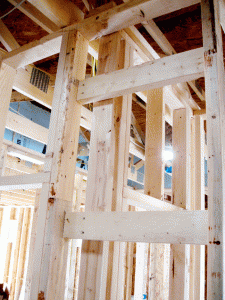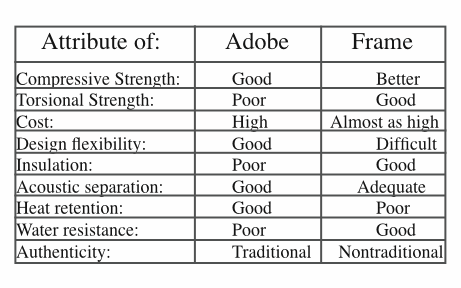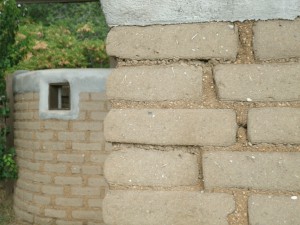The two most popular building methods in
Northern New Mexico
Sticks or Mud?
Comparison of adobe and frame construction methods

There is much to say about the differences between the two types of construction. Frame can reproduce the look of adobe, but frame has greater insulation values and is often less expensive to build. Achieving good insulation with adobe construction is more expensive because exterior foam is needed to provide insulation values that conform to modern building standards. From an artistic point of view, however, adobe is unequaled for flexibility, making organic and irregular shapes easy to construct.
A recent movement in building uses both frame and adobe — each for its own strength — to build an artful and efficient home at a reasonable price.
Alternative Building Systems
Over the past 10 years a number of building systems have emerged that provide an alternative to frame construction while providing an option for owner builders. For our purposes we will describe Straw bale, sandbag, Rastra, and Pumicecrete construction.
Straw Bale Construction is a supporting frame of wood and steel filled in between with straw bales and then plastered. The straw bales are thick, pest and fire resistant and have high insulation values. Straw bale is vulnerable to mold infestation.
Sandbag Construction is the stacking of sandbags filled with adobe dirt to create house walls. When walls are laid up, a concrete bond beam caps the top and the roof is installed on top of that. Exterior insulation is then installed and covered with plaster. This technique is labor intensive.
Rastra blocks are large hollow core blocks made of recycled foam and cement. After the blocks are laid up they are filled with cement and the roof is installed. The blocks provide insulation and a base for plaster both inside and out.
Pumicecrete is a form and pour system for lightweight aggregate cement. Often a “form contractor” is used to assemble the needed forms and pour the Pumicecrete. It provides thick walls, good insulation values and the ability to plaster inside and out with little or no lath.

